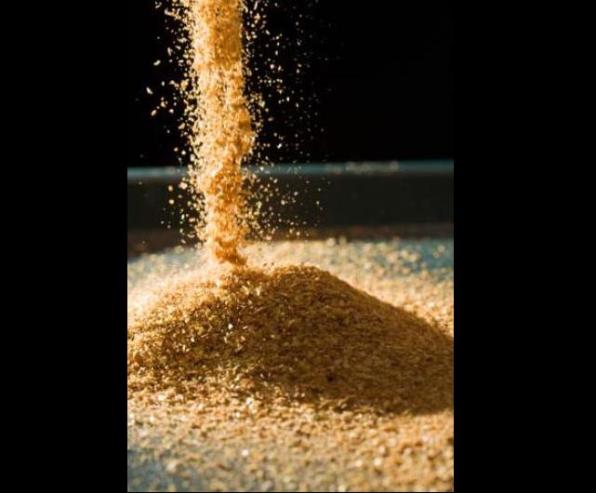Buyers should request specific protein and fat levels in light of the fact that low-oil distiller's dried grains with solubles (DDGS) are becoming more widely available in the United States and in export channels as ethanol plants, which produce the feed co-product, continue to install corn oil extraction equipment.
December 14, 2012

Low-oil distiller’s dried grains with solubles (DDGS) are becoming more widely available in the United States and in export channels as ethanol plants, which produce the feed co-product, continue to install corn oil extraction equipment.
The extraction equipment removes a portion of the non-food grade corn oil during the ethanol process, making it available for other uses such as biodiesel or animal feed. This changes the feeding characteristics and value of the DDGS, however.
The interest in low-oil DDGS was apparent at the U.S. Grains Council's (USGC) Export Exchange 2012, where many international buyers posed the question as to where they could buy the product for export.
“We used to tell international buyers to ask for a number that combined the total protein and fat in the DDGS,” says Randy Ives of Gavilon, LLC, Omaha, NE. and leader of the Council's value-added advisory team, which focuses on DDGS and other value-added products.
For example, buyers used to ask for a “36 profat” DDGS, knowing that the protein and fat levels would combine to reach 36. Before oil was removed, a buyer could assume there would be about 26% protein and 10% or more fat in the DDGS. That isn't the case anymore since the low-oil variety may have as much as 32% protein and only 4% fat – yet it would still come under the “36 profat” description.
“This makes asking questions important,” Ives says. “What buyers really need to do is request specific protein and fat levels. They can then work with exporters to build in a discount schedule to make up for any slight differences in the final shipment.”
By the end of 2012, more than 65% of all U.S. ethanol plants (those operating and those in temporary shutdown) will have the capability to pull corn oil from the ethanol process.
“Within the traditional bulk and container loading area for export, however, 80% of the plants will be pulling oil,” Ives says. “That means 80% of the DDGS in traditional export channels may be the low-oil variety, while 20% may have the higher fat content.”
Knowing those figures does not make buying more clear. “In the end, exporters can find a number of different products with different fat and protein levels that may be available at different prices,” Ives says. “Buyers need to be inquisitive and ask.”
International buyers are now encouraged to state what minimums are acceptable to them – such as a 28% protein and 8% fat as a minimum. Then buyers can start asking about different levels of protein and fat. “What about 6% fat or 7% fat? What is the price difference?” Ives says as an example. “That's the best way for buyers really looking for low-oil DDGS to find it, just put out the specs you want and let an exporter come back with what's available.”
In some ways, Ives says, exploring the price differences in DDGS protein and fat levels is similar to delivery pricing.
“Buyers ask about how delivery time impacts price, and they can do the same on the protein and fat content of the DDGS, too.” In general, low-oil DDGS has higher crude protein and higher levels of amino acids than regular DDGS. The concentrated amino acid profile is positive for monogastric animals like poultry and swine, while dairy animals may be able to utilize more product thanks to the lower level of fat in low-oil DDGS.
While low-oil and regular DDGS look the same, the dried, low-oil product generally has improved flowability.
Many research projects, including some supported by USGC, are underway to better evaluate the feeding value of low-oil DDGS.
You May Also Like



